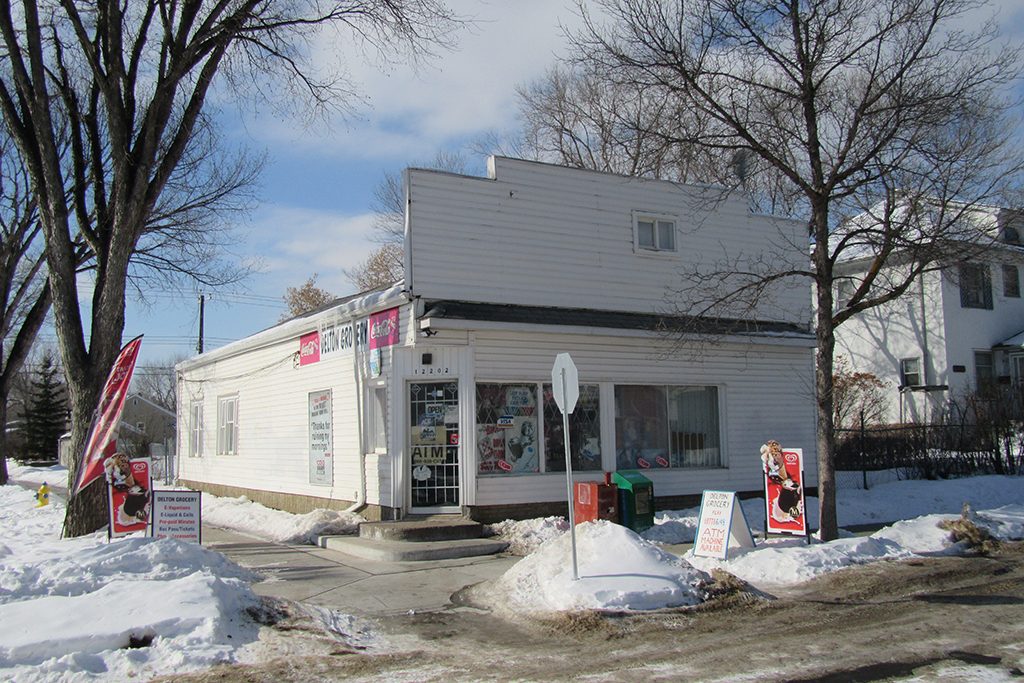EDMONTON, ALTA. – Two Edmonton landmarks are being recognized by the city and given a new lease on life.
The Douglas Manor, a residential building built in 1914 and the Delton Grocery, a store built the same year have been designated by the City of Edmonton as municipal historic resources.
Douglas Manor, which City of Edmonton principal heritage planner David Johnston said has been on the city’s historical inventory for a number of years, has served as a residential building for a variety of occupants over its 105 year life, including the Catholic Archdiocese of Edmonton, which used it as a seminary until 1918 when it became a residence for university students, and orphanage and eventually an apartment building from the 1940s onwards. The owners of the manor will receive $381,327 from the City’s Heritage Resources Reserve to help fund rehabilitation costs.
“In the case of Douglas Manor, the owners are proposing an addition to the rear of the building to add residential microsuites on the back, largely to offset the rehabilitation costs to the original building. An addition to a protected historic resource is in compliance with the standards and guidelines for the conservation of historic places in Canada,” he said.
The building was originally a wood frame, but was clad in brick in 1941, making it a good example of a late Edwardian style structure.
“It has this Edwardian style to it, but when that happened the Edwardian era had long since gone by so it’s a very late example of that kind of style but shows how the building evolved,” Johnston said.
The Delton Grocery building is “more of a mystery,” he said and wasn’t yet on the historic inventory when the city approached its owners.
“From what we can tell, a building with a smaller footprint was on the site where it currently sits today. In and around 1914 there was a building showing on the fire insurance plans called Delton Meat Market, but the building is roughly twice the size, and somewhere between 1924 and 1953 the building got bigger and we’re not sure if it was knocked down and rebuilt or they added onto it,” Johnston said.
The owners of the Delton Grocery will receive a $43,438 grant from the Heritage Resources Reserve fund to assist in rehabilitation costs.
Delton Grocery is a rare example of a commercial building that is still in business performing the same function as when it was built, Johnston added.
“The family’s intention is to continue to maintain it as a corner grocery store and not convert it to anything else. That’s not a requirement of designation that they maintain the use but it really helps with the storyline and the context that’s maintained there,” he said.
Heritage concerns must work with the city’s overall plan to densify the downtown core and other areas and some structures have to make way for newer developments, Johnston noted. The El Mirador, an older Spanish villa style residential complex in downtown Edmonton, will soon be demolished as a large podium and tower complex takes its place.
“The El Mirador and the Patricia Annex are on the city’s inventory of historic resources so when we have a scenario like that one, where the owner comes forward with rezoning and proposed redevelopment, we get involved at that stage to talk to the owner,” he said.
The city then gets involved and explains the historical significance of the original structure, Johnston explained, “and particularly in a context like downtown we talk about what uses could go into that space that aren’t allowed now, and if they were to redevelop is there a way to integrate those buildings are part of the redevelopment,” he added. “But it’s a tough sell, particularly downtown or Whyte Ave. where land values are really high.”
“Anytime we have a designation of a building in Edmonton as a municipal historic resource it’s a result of the owners coming forward to initiate that process so it’s not something we impose on owners,” Johnston said.
“Typically, an owner will be interested in doing some rehabilitation work on a building and in Edmonton a building has to be listed on our inventory of historic resources first to qualify to be fully designated and access our grants. The owners are typically aware of that so when they come in to talk about rehab work, we always talk about the opportunity to designate, legally protect the building and access grants,” he added.
Municipalities in Alberta have to compensate owners for decreases in land value once a building is designated as a historical resource, and in lieu of that the City of Edmonton provides rehabilitation grants, Johnston explained. The provincial government can designate a building as a provincial historic resource and can do so without compensation or the owner’s consent though that happens rarely, Johnston said.












Recent Comments
comments for this post are closed